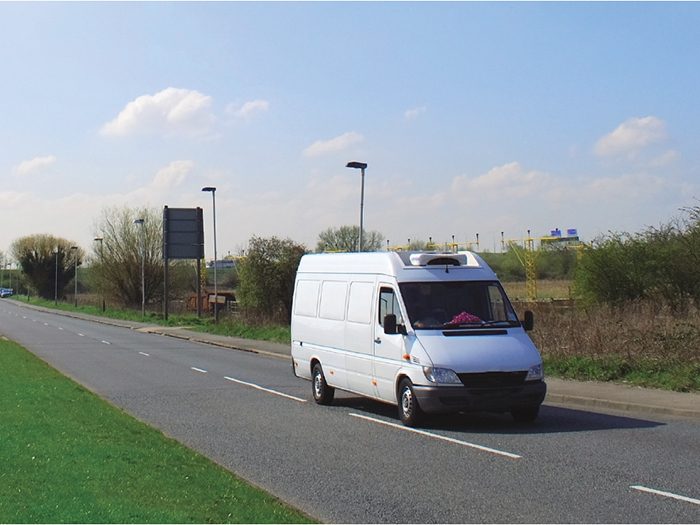Transportation Risks
Cannabis Transport Risk

While driving around with a hundred pounds of marijuana might be a criminal activity in most places, it’s just another part of the business day in states like California, Nevada and Colorado.
As legal marijuana gains a foothold across the United States, those in the industry say it’s an exciting and challenging time. With a small, high-value product and lots of cash involved, the risk of theft is high. Add in the myriad of state regulations and the prospect of a federal crackdown, and legal cannabis transportation can be a risky business.
High Value Product with Big Risk
Recreational cannabis is now legal in eight states, and it is on track to become a $24 billion industry by 2025, according to the Cannabis Industry 2017 Annual Report. From the fields to counters of dispensaries, the growing industry continues to face a number of operational challenges due to its unique legal status.
Because cannabis remains illegal under federal law, many banks and insurers do not want to participate, leaving large parts of the industry unbanked and uninsured.
As a result, there are notable risks in transporting product. Cannabis distributors not only transport hundreds of pounds of high-value product but also six-figure sums of cash.
For transport companies like Hardcar Security in California, the risk is big. It took the company eight months to find insurance to cover their operations, product and cash, said CEO Todd Kleperis.
“You become a huge target [for criminals] and your risk profile is off the charts,” Kleperis says.
“It’s not an easy business to get in.”
Hardcar Security transports cannabis products and cash in California for the medical and recreational marijuana industry. Due to the risk involved, Hardcar operates more like a military operation than a transport company, Kleperis said.
Trucks are unmarked, armor-plated and equipped with bulletproof glass. Most drivers are former military veterans, travel armed, and take different routes to minimize risk.
“We want to make sure that when people see our trucks, they don’t know if its product or cash. I don’t even want them knowing what our trucks look like,” said Kleperis.
Green Insurance Options
The legal marijuana industry is in its infancy, but a few insurers and brokers are starting to enter the market. Zeyger Insurance in Calabasas, Calif., offers insurance to every area of the cannabis industry, from manufacturing and transportation to retail.
Zeyger president and founder Michael Senderovich has been attending cannabis industry meetings and events to stay in touch with the concerns and needs of businesses. There is strong interest coming from California, he said.
How to cover government seizure is the number one question when we’re at trade shows. It’s specifically excluded in every policy I’ve seen.– Denny Christner of Cannabis Insurance Associates
“There are already 10,000 applications in the city of Los Angeles alone, and they are all still pretty much pending. It’s moving very slowly, but there is a lot of interest. And they need insurance,” Senderovich said.
Much like any other industry, cannabis companies are seeking insurance products like general liability, workers’ compensation and product liability. What complicates the matter is that cannabis remains illegal under federal law and is subject to varying state and local laws, especially when it comes to transportation and distribution.
There is no straightforward path to coverage and every policy is written differently according to the market and risk, says Lisa Chaumont, vice president of underwriting, Cannabis Insurance Solutions, in Broomfield, Colo.
“It depends on a number of factors. Whether they are transporting for themselves or for a third party. Whether it is armored, how it is carried,” Chaumont said.
One of Chaumont’s main carriers offers a policy that covers up to $100,000 in product and up to $50,000 in cash.
One unique aspect is that product coverage is only triggered when an entire load is stolen. A typical deductible is $2,500, and while it can vary dramatically by strain, the average going rate for a pound of cannabis in California is $1,600.
While there are many brokers and insurers advertising coverage, many don’t offer the coverage cannabis companies really need, Senderovich said. Many have fine-print marijuana exclusions.
So, while policies may cover general liability, auto and property, they likely don’t cover cannabis. For those that do offer full coverage, the requirements can be high.
“Our insurance would not allow us to do both product and cash without armored trucks. There is no insurance carrier in the world that would do that,” Kleperis said.
“Seed to sale” regulatory systems in many legal states track products with packaging and barcodes from the time it leaves the farm until the time it is sold. This chain of custody not only helps regulators track product, but also can help insurers, Chaumont said.
In one recent claim for stolen product, the insurer was able to verify the cannabis all the way back through the system to the farm.
Good coverage also doesn’t come cheap, and underwriters want to see a lot of documents, including business licenses and appropriate state and local cannabis permits. In California, the Bureau of Cannabis Control started accepting applications for retailers and distributors in early-December.
“We get a lot of startups that don’t have a permit yet are looking for quotes or coverage, and we really can’t continue that process until they show proof. Underwriters are doing a good job of classifying and clearing the prospects,” said Denny Christner, CIC, Cannabis Insurance Associates, a division of Brown & Brown Insurance in Lafayette, Calif.
Regulations and Federal Law Uncertain
Cannabis’ illegal status under federal law continues to be the biggest hurdle in the industry, one that scares away most insurers, Christner said. While federal legalization could make the industry “no different than alcohol,” challenges will remain as long as marijuana remains on the DEA’s list of Schedule I drugs, he said.
The federal government has had a lax attitude over the past couple of years, but transporters cannot cross state lines or any place that is considered federal land.
At Hardcar, drivers are routed to ensure they do not approach any federally-regulated lands or risk going through federal checkpoints.
“If you cross a federal checkpoint anywhere within the state of California, you put yourself in immediate risk,” he said. “You have to route your drivers to ensure they’re not going anywhere near them.”
In December, the California Highway Patrol seized a vanload of 1,875 pounds of marijuana from distribution company Old Kai.
While the company produced documents proving they were complying with new state and local laws, authorities said it didn’t matter because the rules were not yet in place until January 1, 2018. And even within legal states, cities and counties are starting to create their own laws.
“How to cover government seizure is the number one question when we’re at trade shows. It’s specifically excluded in every policy I’ve seen,” Christner said.
And the risks from the federal level could be growing. U.S. Attorney General Jeff Sessions announced in early January 2018 the rescinding of an Obama-era policy that discouraged federal prosecutors from pursing marijuana-related charges in states that had legalized it.
Most in the industry say it’s symbolic only and unlikely to have any impact.
Politicians in legal states note that the federal government is unlikely to confront states given the growing public acceptance of marijuana use. Sessions did not order prosecutors to go after legal cannabis but instead said the decision would be up to each of the 93 U.S. district attorneys.
“It will be business as usual …The risk you put yourself at, personally and financially, is very high. But the bigger the risk, the bigger the potential windfall.
“The people who are now on top of the alcohol industry and are worth billions are those that took risk in the prohibition era,” Kleperis said. &












